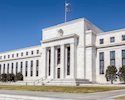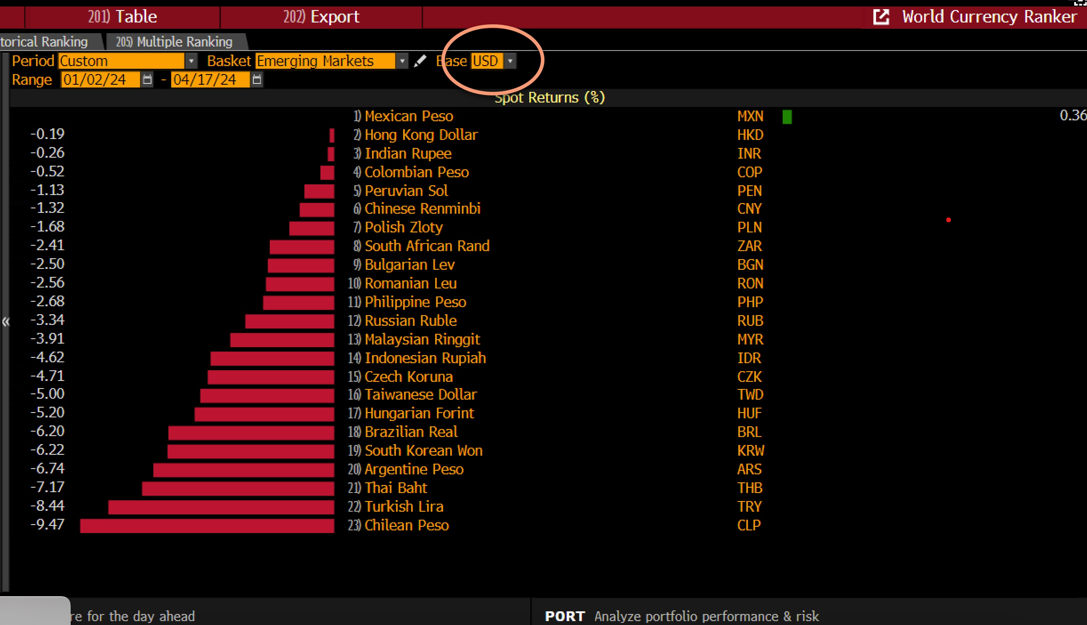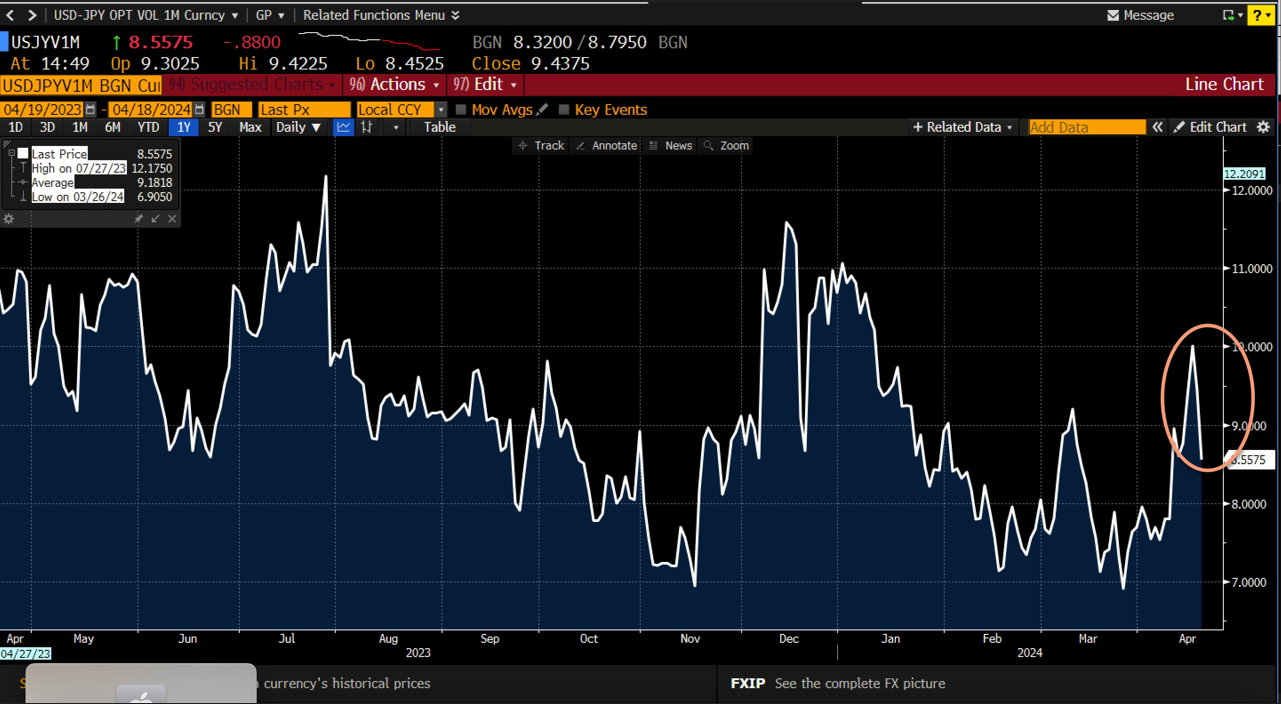The main theme in financial markets right now is the Federal Reserve’s double pivot in the US, from not cutting interest rates, to signaling more rates are coming to then reversing course again and saying that inflation remains too hot for rate cuts at this stage. The market is actively pricing out the prospect of rate cuts in the US, and there is now a more than 20% chance that US interest rates will stay where they are currently until at least November, according to the CME Fedwatch tool.
The impact of ‘higher for longer’ has sent bond yields surging across the world and has ended the rally in stock markets. It has also had a major impact on the global FX market. The dollar index has risen by 5% since the start of this year, and it is the top performer in the G10 FX space so far this year. USD/JPY is higher by 8%, while the euro is lower by more than 2% vs. the USD so far in 2024, while the pound has put up the best fight and GBP/USD is lower by 1.29% so far this year.
EM FX
In the last month, the dollar has been on a rampage higher, as US Treasury yields have surged. The 2-year US Treasury yield is higher by 79 basis points so far this year, and this is giving the dollar a yield advantage over other countries. Dollar strength is particularly noticeable in the EM space. In the past 4 weeks, the Brazilian real is lower by 3.5%, the Korean won is down by 2.7%, and the Indonesian rupiah is lower by more than 2%. The Indian rupee sunk to a record low vs. the USD earlier this week, and the Turkish lira is also in the firing line having weakened by 8.4% so far this year.
Emerging market FX vs USD YTD
Source: XTB and Bloomberg
The dominating dollar has caused governments to take steps to address disorderly FX moves. Officials in Asia have spoken out to try and dampen some of the downward pressure on their currencies. For example, Japan’s currency chief reiterated the G7’s commitment to preventing disorderly moves in the FX space, earlier this week South Korea said that it had spoken to officials in Japan about currency concerns and vowed to counter any drastic swings. Likewise, China has also said that it will monitor the yuan, which is also down by more than 1.3% vs. the USD this year and fell to its lowest level since November earlier this week. Indonesia’s central bank has already intervened to prop up the rupiah, Malaysian authorities have also said that they will intervene to support the ringgit.
Intervention risk rises
The risk is that this is not enough. The dollar is rallying because its economic fundamentals are strong and it is rising above trend. According to the Atlanta Fed’s GDP Now tool, its estimate for Q1 GDP is 2.9%, and this has been trending higher in recent weeks. Added to this, the dollar is also considered a safe haven, and it can rally during periods of elevated geopolitical risk. The situation in the Middle East remains fluid and this is another reason why we do not see the dollar declining in a meaningful way at this point. The Diverging economic and monetary policy paths could lead to further dollar strength, affecting both the G10 FX space and the emerging world.
From a traders’ perspective, we see the following themes developing in FX:
-
The G7 issued a joint statement earlier this week reiterating its commitment to avoiding disorderly moves in FX.
-
However, so far, the risk of intervention, either uni or multi laterally, is from Asia. Japan and Korea have spoken about jointly supporting their currencies.
-
Indonesia and Malaysia have also intervened to stem the decline.
-
Thus, for now, Asian currencies are most at risk from direct intervention to prop up their currencies vs. the dollar.
-
There is not a great history of intervention working, so multilateral action could be more effective.
-
We do not see the UK or the Eurozone intervening in the FX market any time soon. However, EUR/USD has fallen sharply this month. A sustained drop below $1.05 towards $1.03 could see verbal intervention by the ECB, ahead of action by the G7 to try and limit dollar strength. We think a move of this magnitude would have the support of the US authorities.
-
In the mid-80s, the world’s major economies worked together to try and limit dollar strength, this is known as the Plaza Accord. We do not see another Plaza Accord 2.0 anytime soon, but it cannot be ruled out, especially if the euro crashes below $1.05.
Could the strong Dollar cause a currency crisis?
A strong dollar can impact the global economy in a few ways. It can make global exports more attractive to the US, which is good for the global economy, however, it can also impede global trade, especially in commodities and push up debt refinancing costs to unstainable levels. Here are three reasons why a strong dollar could cause a currency crisis:
Commodity imports
Energy importers such as Japan, struggle when the dollar rises at the same time as commodity prices, as weakness in the yen makes crucial energy imports significantly more expensive.
Dollar denominated debt
Added to this, there is a lot of outstanding dollar denominated debt around the world. The Bank for International Settlements, reports that Saudi Arabia, Indonesia, Korea, Turkey, Argentina, Brazil, Chile and Mexico are all large holders of dollar-denominated debt. Servicing this debt has got more expensive in the last year, due to the FX impact of a stronger dollar. Chile, Mexico and Korea have all increased their dollar denominated debt in recent quarters, which means that they are also paying higher levels of interest. Turkey, Brazil and Malaysia have cut their levels of dollar-denominated debt, although Turkey and Brazil still have large amounts outstanding.
While there is no suggestion that these countries can’t pay back these dollar loans, they have become more expensive to service, which could eat into the budgets of these countries, and may hinder economic growth, as money cannot be spent to help the domestic economy.
This is why we believe that the world is going to watch the dollar closely from now on. Due to the significance of the dollar to the global economy, it cannot continue to rise at this pace for the long term, otherwise it is likely to break something, especially in the EM world.
Volatility in FX
Volatility in the FX space has moderated in recent days as the dollar has backed away from recent highs, suggesting that the market is taking the G7 commitment to avoid disorderly moves in the FX space seriously for now. However, volatility is alive in the FX space after declining for most of this year. It could spike higher again, especially if we see stronger economic data from the US or signs that the next move from the Fed will be a hike, not a cut.
USD/JPY one-month volatility
Source: XTB and Bloomberg
The dollar is strong for a reason. While it may not be directly at risk from intervention right now, that is growing. A currency crisis would be bad news for the global economy, and for risk sentiment, and is something the authorities will no doubt want to avoid.
CFD’s, Options and Forex are leveraged products which can result in losses that exceed your initial deposit. These products may not be suitable for all investors and you should seek independent advice if necessary.
Recommended Content
Editors’ Picks
Fed’s Powell said further conviction that inflation is returning to the target is needed before start cutting rates – LIVE

Chair Powell reiterated that the Fed's policy rate remains restrictive, although further confidence that inflation is retreating towards the bank's target is needed before deciding on reducing rates.
EUR/USD extends gains above 1.0700 on Powell’s presser

The selling bias in the Greenback gathers extra pace as Powell’s press conference is under way, lifting EUR/USD to daily tops past the 1.0700 hurdle.
GBP/USD rises above 1.2500 on weaker Dollar

The resumption of the upward pressure sends GBP/USD back above 1.2500 the figure in response to increasing selling pressure hurting the Greenback.
Gold surpasses $2,300 as Dollar tumbles

The precious metal maintains its constructive stance and trespasses the $2,300 region on Wednesday after the Federal Reserve left its FFTR intact, matching market expectations.
A new stage of Bitcoin's decline

Bitcoin's closing price on Tuesday became the lowest since late February, confirming the downward trend and falling under March and April support and the psychologically important round level.

